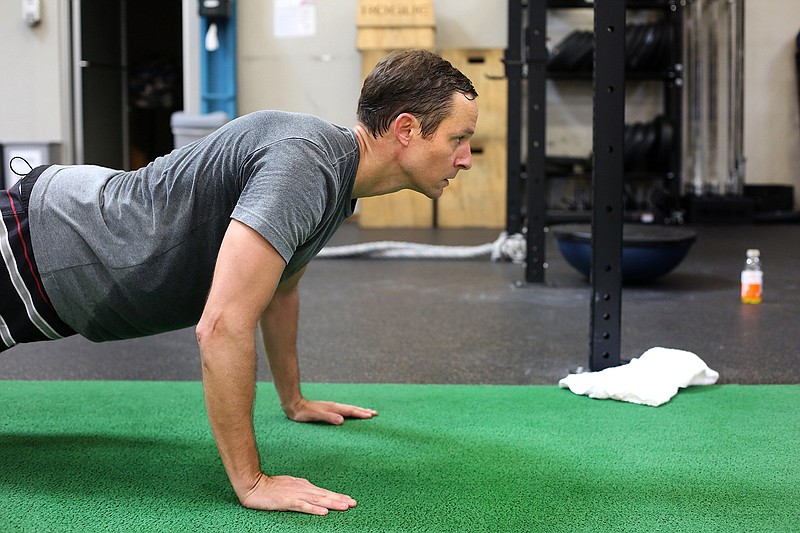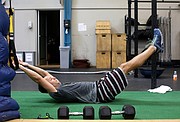Skin-to-the-wind season may be over, but cool weather doesn't have to cost you all your summer paddling gains.
Whether you paddle to compete or just for exercise, a 12-month training plan is key, says Ben Friberg, a competitive stand-up paddleboarder and founder of the 31-mile Chattajack paddle race held annually on the Tennessee River.
"The main things you're dialing in are strength and endurance," Friberg says of training.
Here is a look at his winter regimen for staying paddling-fit.
Strength Training
Friberg's strength training focuses on his core and "lats," or mid-back muscles.
"When you go to a race and see the guy who is super-muscular, those are not usually the guys you need to worry about. It's the guy with the strong trunk," he says, adding, "If you're using your biceps to paddle, [people] using their core for strokes will just blow right by you."
Friberg completes the following two circuits 3-4 days a week. The key to circuit one, he says, is to work each exercise as slowly as possible, helping to create more negative resistance. "If it takes you less than 30 minutes, you're probably going too fast."
Circuit One: Bodyweight
Pull-ups: 5
Push-ups: 5
Sit-ups: 20
Weighted squats: 5 (Friberg squats around 70 pounds)
Repeat circuit five times.
Circuit Two: Rowing machine
2-minute sprint using maximum effort
1-minute rest
Repeat circuit six times.
Endurance Training
"Cardio is huge," says Friberg. "You have to maintain an honest sport during the winter." An "honest sport," he explains, is a type of activity that cannot be cheated.
In sports such as cycling, for example, a rider can closely follow the wheel of another rider, an act known as drafting, which lets that cyclist achieve a certain speed using less energy. But, "in sports like swimming or running, if you're going to maintain a moving average, there's no shortcut," Friberg says.
Throughout winter months, he averages about 20 running miles per week.
One cardio challenge Friberg says he loves to hate begins at the bottom of Forest Avenue, located directly across from the Walnut Street Bridge. There, he sets his stopwatch for one minute, then sprints up the steep avenue until his alarm sounds. He repeats this 10 times.
"It's the most miserable exercise, but it will give you the heart of a lion," he says.
On the Water
In addition to his off-the-water training, Friberg does continue to paddle through the winter. It just requires more caution, he says. When paddling in cold weather, Friberg recommends always bringing a cellphone, a spare pair of clothes, and familiarizing yourself with the symptoms of hypothermia, which can range from shivering to clumsiness to loss of consciousness.

